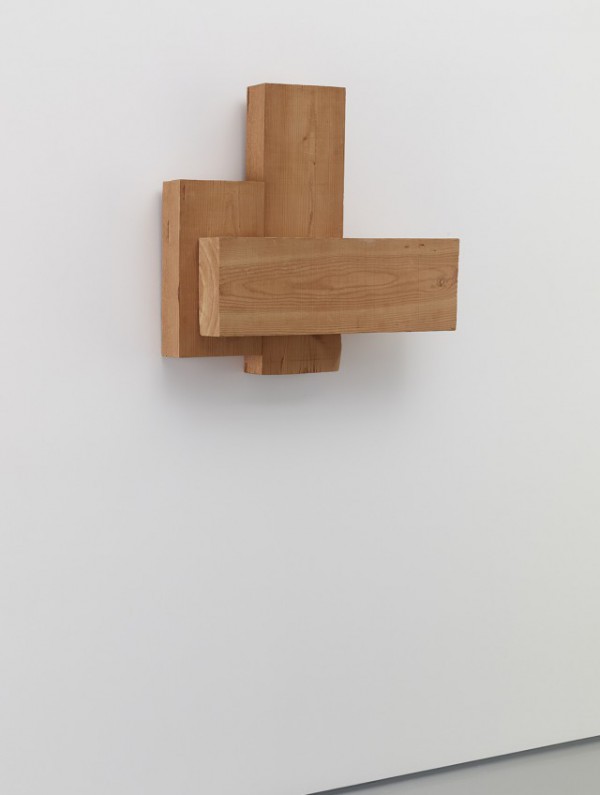
I spotted this recent wall-piece by Richard Nonas, called “Crude Thinking,” in his solo show at Fergus McCaffrey gallery in New York. Funny thing is, I saw it with an art-critic friend who finds this kind of pared-down abstraction too cerebral to have any life, beyond what a critic can give it by dressing it up in fancy words. Whereas my problem with this work—if you can call it a problem—is that it seems too obviously, easily lovable. For me, this is just what art is obviously supposed to look like to give pleasure.
Do you think the difference has anything to do with the fact that my friend came to art a bit later, in the postmodern 1980s and ’90s, whereas I happened to be surrounded by late abstraction as a child? We lived a short bike ride from Montreal’s original Museum of Contemporary Art, and Nonas’s work is just what I would see on any given weekend in the early 1970s when my siblings and I would cycle over.
My new theory: Critics—and all aesthetes—imprint, duckling-like, on the first art they come to see; the rest of an aesthetic life is spent either seeking that same familiar pleasure, or trying to find new, less obvious joys that will push you beyond the one that lives deep in your heart. Either way, the childhood conditioning is inescapable.
That’s why I worry about all the Thomas Kinkades in American homes…